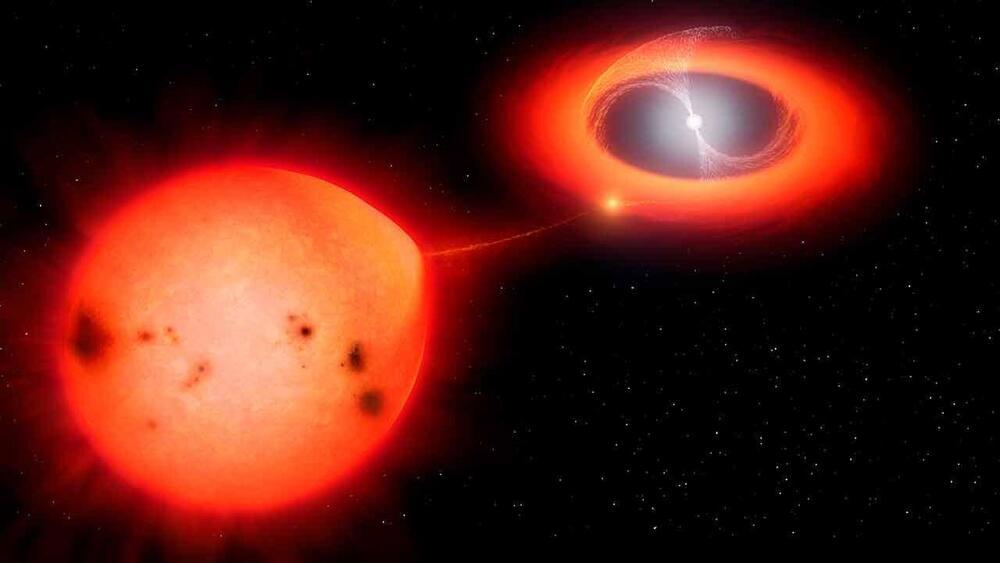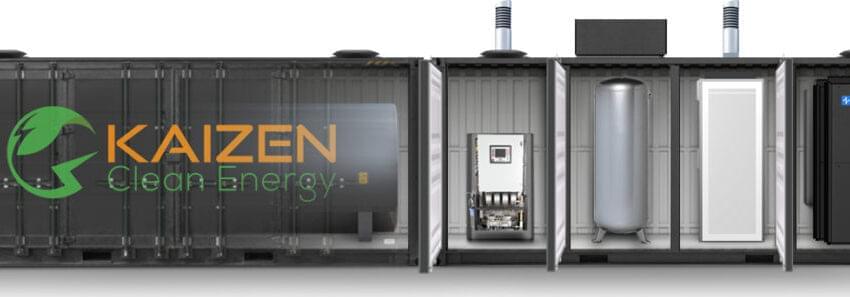Enovix, based in Fremont, California, is developing 3D silicon lithium-ion batteries with faster charging times and higher energy densities than the current generation of cells.



Time travel makes regular appearances in popular culture, with innumerable time travel storylines in movies, television and literature. But it is a surprisingly old idea: one can argue that the Greek tragedy Oedipus Rex, written by Sophocles over 2,500 years ago, is the first time travel story.
But is time travel in fact possible? Given the popularity of the concept, this is a legitimate question. As a theoretical physicist, I find that there are several possible answers to this question, not all of which are contradictory.
The simplest answer is that time travel cannot be possible because if it was, we would already be doing it. One can argue that it is forbidden by the laws of physics, like the second law of thermodynamics or relativity. There are also technical challenges: it might be possible but would involve vast amounts of energy.
The US Department of Defense’s innovative tech unit, the Defense Advanced Research Projects Agency (DARPA), is looking for ways to recharge drones while still in flight using laser-shooting tanker planes as the source of that energy.
“This Airborne Energy Well is a potential component of a more expansive energy web of power generation, transfer relays and receiving solutions, enabling the Department of Defense (DoD) to dynamically allocate energy resources to more flexibly deliver military effects,” the RFI notes.

Researchers in Sweden report that they are closing in on a way to replace batteries for wearables and low-power applications in the internet of things (IoT). The answer lies in an ink coating that enables low-grade heat, which is generated by devices, to be converted to electrical power.
Publishing in Applied Materials & Interfaces (“Thermoelectric Inks and Power Factor Tunability in Hybrid Films through All Solution Process”), the researchers from KTH Royal Institute of Technology in Stockholm report that they have developed a promising blend of thermoelectric coating for devices that generate heat amounting to less than 100 oC.
A piece of film is coated in thermoelectric ink. (Image: KTH The Royal Institute of Technology)

Astronomers are buzzing after observing the fastest nova ever recorded. The unusual event drew scientists’ attention to an even more unusual star. As they study it, they may find answers to not only the nova’s many baffling traits, but to larger questions about the chemistry of our solar system, the death of stars and the evolution of the universe.
The research team, led by Arizona State University Regents Professor Sumner Starrfield, Professor Charles Woodward from University of Minnesota and Research Scientist Mark Wagner from The Ohio State University, co-authored a report published today in the Research Notes of the American Astronomical Society.
A nova is a sudden explosion of bright light from a two-star system. Every nova is created by a white dwarf—the very dense leftover core of a star—and a nearby companion star. Over time, the white dwarf draws matter from its companion, which falls onto the white dwarf. The white dwarf heats this material, causing an uncontrolled reaction that releases a burst of energy. The explosion shoots the matter away at high speeds, which we observe as visible light.

Check it out and post some of the stuff from it. My favorite because of fuel prices was this:
Many innovations in the mobility sector will be on the agenda, among them Japanese electric inflatable vehicles transportable in a backpack and operational in just a few seconds from Poimo, which will be seen for the first time outside Japan.
You will find many more innovations to investigate and post. Just google the companies listed in the link and their innovations.
VivaTech is the world’s rendezvous for startups and leaders to celebrate innovation. It’s a gathering of the world’s brightest minds, talents, and products.


After previously studying the phenomena of two sound waves in quantum liquids, scientists have now observed sound moving at two different speeds in a quantum gas.
If you were somehow immersed in the three-dimensional gas used for this study, you would hear every sound twice: each individual sound carried by two different sound waves moving at two different speeds.
This is an important development in the field of superfluidity – fluids with no viscosity that can flow without any loss of energy.

Courtesy of Tohoku University
Scientists are ever-seeking to develop safer, higher-capacity, and faster-charging rechargeable batteries to meet our energy needs sustainably. Metal anodes show the highest promise to achieve that goal. Yet the use of alkali metals poses several problems.
In a rechargeable battery, ions pass from the cathode to the anode when charging, and in the opposite direction when generating power. Repeated deposition and dissolution of metal deforms the structures of lithium and sodium. Additionally, fluctuations in diffusion and electric fields in the electrolytes close to the electrode surface leads to the formation of needle-like microstructures called dendrites. The dendrites are weakly bonded and peel away from the electrodes, resulting in short circuiting and decreases in cycle capacity.

Kaizen Clean Energy (KCE) and ZincFive have come together to develop an integrated distributed energy solution for EV charging, hydrogen fueling and backup power. The new solution is said to provide the lowest delivered cost for hydrogen fueling, as well as up to 2,300 kg/day of hydrogen production, which is equivalent to 38 MWh of usable energy, in a 40-foot, movable containerized solution. It can be islanded or grid-connected, with no risk of battery thermal runaway and a small volume of hydrogen stored on site. The system integrates KCE’s hydrogen generator, ZincFive’s immediate power nickel-zinc batteries, and fuel cells from Power Cell to offer customers modular, scalable economic fueling as a service. Robert Meaney, co-founder of KCE, told pv magazine that the energy input comes from methanol. He said the system is essentially the clean version of a diesel generator. It uses the ZincFive battery for immediate demand response as the methanol-to-hydrogen system ramps up to full production over the first 15 minutes. After entering full production mode, the batteries shut off and the reformer takes over the full power demand. The system is charger agnostic and can support multiple DC fast chargers at once. KCE has started accepting pre-orders and plans to deploy a 20-foot, 150 kW solution with pilot customers in the fourth quarter of 2022.
Lightyear has launched the final design of its long-range, production-ready solar car. The model, which has been renamed “Lightyear 0,” has a Worldwide Harmonized Light Vehicle Test Procedure (WLTP) range of 625 kilometers and consumption of 10.5 kWh per 100 kilometers. However, the Dutch startup claims that a theoretical range of 695 kilometers could be achieved, with a battery pack capacity of 60 kWh. “The optimized solar roof and holistic design mean that the car can drive for weeks, even months, without charging,” the company said. Lightyear is already readying its second solar electric car, which will be available by late 2024 or early 2025.